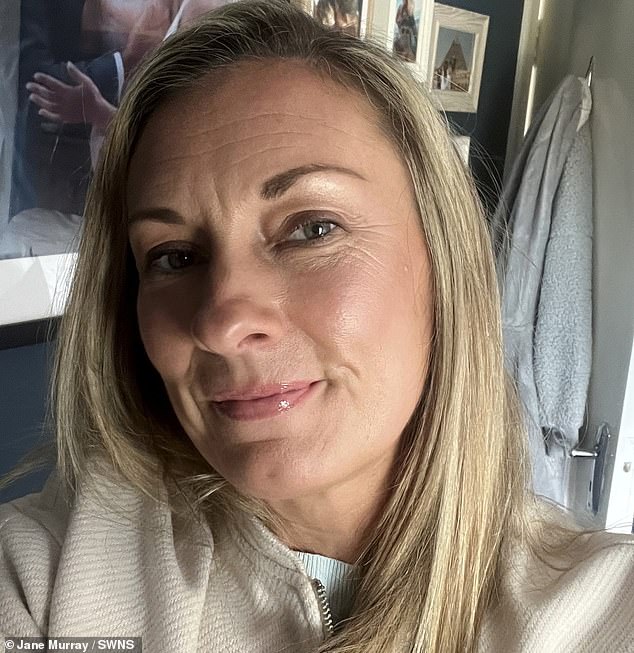A former sun worshipper has warned of the deadly impact of seeking a natural tan after she was forced to have a section of her arm removed due to skin cancer.
Jane Murray, 46, from Dublin, noticed a larger-than-average mole on her arm four years before her diagnosis, but thought it looked ‘normal’ so dismissed it.
Only when a friend, who worked as a nurse, pointed it out in November last year did she decide to visit a GP.
‘The doctor said they didn’t know what it was, but they were going to send me to the hospital to remove it to be on the safe side,’ said the personal trainer.
‘On December 3 I had it removed, and I received an email in February asking if I could go back in and see them.
‘I went back in on my own. When she started telling me the diagnosis I didn’t think she was talking to me.
‘There was a disagreement between the pathologists as to what stage it was at, so [the biopsy] had been sent to a leading melanoma expert in the UK’.
Ms Murray, a mother of one, was eventually diagnosed with stage two melanoma – the deadliest type of cancer.

Jane Murray, 46, was diagnosed with the deadliest form of skin cancer after ignoring a ‘normal’ looking mole on her arm for four years

She first spotted a mole on her left arm in 2020 after her friend brought it up

She had the mole removed the following month when surgeons were forced to make a 2cm incision to remove the cancer, leaving Ms Murray with 77 stitches
Around 15 per cent of those who are caught at stage two will not live beyond five years, according to studies.
At stages three and four – when the disease has spread to nearby tissues and organs or bones – these statistics drop down to 66 and 27 per cent, respectively.
Ms Murray underwent surgery again the following month – this time to remove a large patch of skin on her arm including some glands to ensure all the cancer cells were destroyed.
The procedure was not simple. Surgeons were forced to make a large incision to remove the cancer, leaving her with 77 stitches.
To avoid having to do a skin graft, the surgeon did a ‘yin-yang flap’ meaning the scar had to be taken much further up and down her arm in order to join her skin back together.
She said: ‘This is a whole big chunk of my arm. I woke up to a completely different outcome than what I had imagined.’
Thankfully, on April 23, Jane received the news she was cancer free.

To avoid having to do a skin graft, the surgeon did a ‘yin-yang flap’ meaning the scar had to be taken much further up and down Jane’s arm in order to join her skin back together. Above, Ms Murray’s estimate of skin to be removed
Eight weeks into her recovery, she is urging others to protect themselves in the sun and get checked.
‘I was a sun worshipper, I would sit in the sun morning to night on my holidays.
‘I always wore my SPF, but I think I’d be safe at the start and use factor 30, and then try to find factor two to buy for the last few days.
‘My husband would tell me you’re actually sizzling in the sun.
‘At home, whenever I had a free moment, I’d be outside in the garden.’
It just ‘wasn’t worth it’, she added.
She said: ‘A sun tan is gone two weeks after you get home from holiday.
‘The sun beds are so dangerous I don’t know how they’ve not been banned.
‘If a mole feels funny, don’t feel stupid for getting it checked.’
It takes a scarily low number of sunburns – only five – to make you vulnerable to the condition that kills more than 2,000 people in the UK every year.
One in 35 men and one in 41 women in the UK will be diagnosed with melanoma skin cancer in their lifetime.
The most harmful type of sunrays are UVB which hit the outer layer of the skin (the epidermis) and cause the most sunburn, as well as UVA rays which penetrate much deeper and contribute to ageing.
Both are ultraviolet, which means they cause skin cancer.
A worrying 90 per cent of skin cancer cases in the UK are a direct result of sunburn and using sunbeds, according to Cancer Research.
This article was originally published by a www.dailymail.co.uk . Read the Original article here. .


